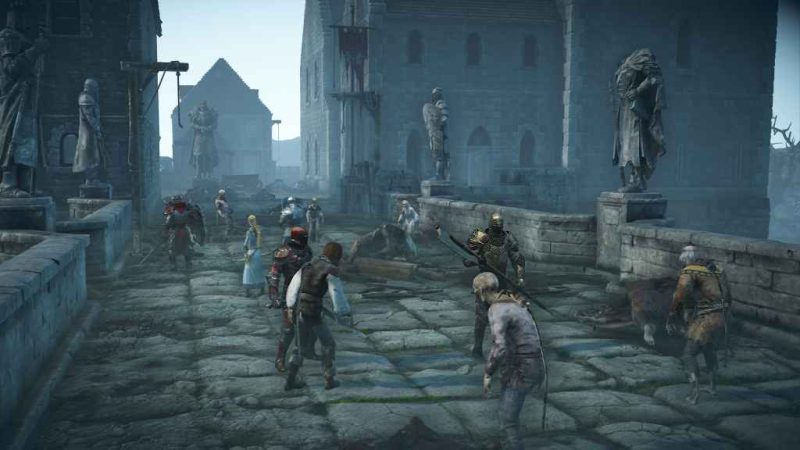King Arthur: Knight’s Tale Hands-On Preview (PS5) – Tactical Arthurian Adventures

King Arthur: Knight’s Tale Hands-On Preview (PS5) – Tight and layered strategic gameplay has been married with a grimdark inversion of Arthurian legend to create an enticing title for strategy game enthusiasts on PlayStation in King Arthur: Knight’s Tale.
Following the gritty story of Mordred, this well-researched and executed version of classic Arthurian legend sees the legendary figure taking up the mantle as supposed King and reclaiming what he sees as his own.
In the jump from PC to console, special care has been taken to ensure that the experience has been faithfully translated from keyboard to controller and the result is a responsive and intuitive tactics experience that channels the very best of the genre while bringing its own flavour to the table.
King Arthur Knight’s Tale Hands-On Preview (PS5) – Tactical Arthurian Adventures
A New Spin On A Classic
In an exciting inversion of the well-known story of King Arthur, players assume the role of Mordred as he returns to life after the deadly events of a previous battle. From there, it’s up to players to guide Mordred and his gathered army of “allies” against the forces of the now evil Arthur and gain what he desires by any cost.
This simple premise folds out into a narrative full of interesting characters and choices to be made about the type of king that Mordred shall become over the course of the game.
Will Mordred be a fair and just king? Or will Mordred become a tyrant? While these decisions may not impact the final conclusion of the game, these choices do influence the party members that you unlock throughout the adventure and leads to new potential for allies, or enemies.
Heading Into Combat
The main bulk of the game is spent in grid-based combat encounters, with 4 main party members in each conflict. These typically task players with strategically deploying their forces according to their respective strengths and weaknesses. Archers and mages are typically best saved for the back-lines, where knights and defenders are far stronger in the front.
While battles begin as simple tests of moving units to specific places and choosing the correct attack, I quickly found myself being more careful with my units as more moving parts of various systems are introduced in following chapters.
Combat quickly begins to carry a weight that I haven’t encountered in many other strategy RPGs of this type and this sense of consequence had be rethinking potential moves on a regular basis. I was forced to consider brute-forcing an enemy or if I should slowly whittle them down over time.
Having to think about these things was a great change of pace from what I am personally used to.
Looking After Your Army
Outside of battle, King Arthur: Knight’s Tale features light base building elements that will influence the potential of your allies in combat. Rebuilding Camelot according to your needs and resources is the other half of the main gameplay loop and has far more depth than an initial look would suggest.
With each member of your battalion having two distinct health values, it’s up to you to keep them from receiving injuries that will impact their performances in upcoming battles. Should they suffer injuries, you can leave them behind for a mission or two in the medical ward and see their injuries seen to, at the cost of not having potentially a powerful unit for the next battle.
This constant risk and reward changes the outlook of entering new missions, as over-relying on a particular powerhouse might lead to consequences down the road, where you can’t rely on them to see you through a battle. Would the risk of taking an injured unit into battle pay off against the potential of losing them forever?
These questions punctuate every interaction around the Camelot base-building element of the game and were a fun layer of challenge on top of already intense combat encounters. During my hands-on with the game, I wasn’t able to see Camelot working at full steam, but there was a promise of far more in the final game.
These questions become significantly weightier in the so-called “rogue-lite mode”, where manual saving is disabled and the pressure is on to craft flawless strategies or permanently deal with your mistakes. While I won’t be using this mode, for aficionados of the genre, this mode is for you.
Customisation Galore
While my short time with this preview build was far from enough to experience everything on offer, I can see a celar foundation of a strategy RPG that is dripping in well-researched Arthurian atmosphere. I also had a brief explore of the levelling system of the game and saw the potential for interesting personalised builds of partiuclar characters.
While characters start out with simple archetypes, each character has their own skill trees that enables varied progression paths. With the quantity of units on offer for players, there is an exciting opportunity for player expression in building new loadouts.
King Arthur: Knight’s Tale arrives on PS5 on February 22, 2024.








